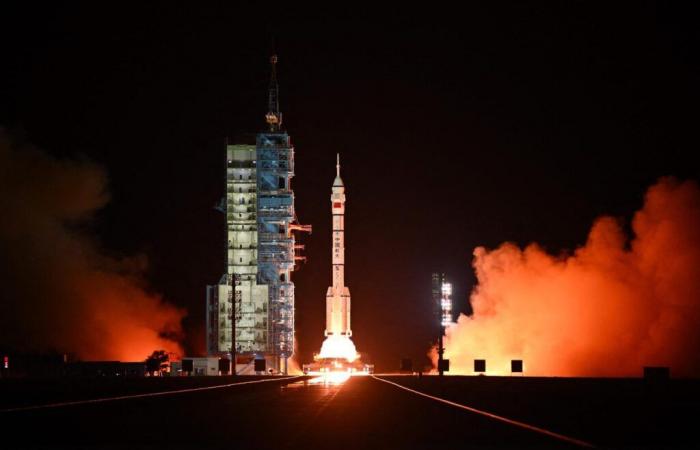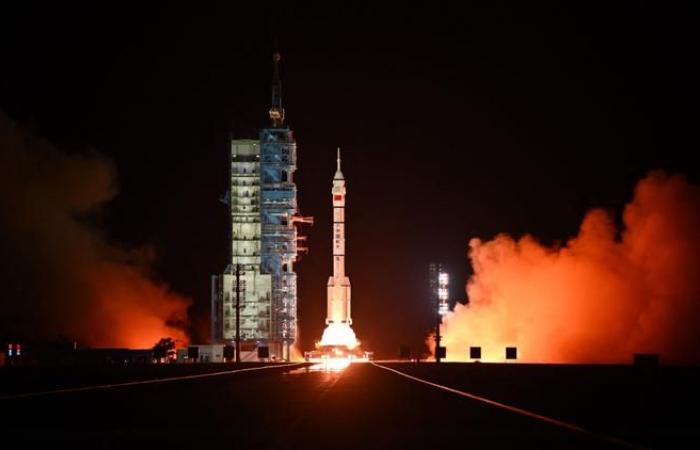China sent a new trio of astronauts to its Tiangong (“Heavenly Palace”) station during the night of Tuesday to Wednesday, November 30, a mission called “Shenzhou-19” intended in particular to prepare for the sending of a team to the Moon. The major objective of the Asian giant is to land a crew on the lunar star by 2030, then to complete the construction of an international scientific research base there around 2035.
The spacecraft was launched at 4:27 a.m. local time on Wednesday by a Longue-Marche 2F rocket from the Jiuquan Satellite Launch Center (northwest China), according to the official Xinhua news agency. and images from state television CCTV. It rose into the night sky, giving off an intense light, journalists from Agence France-Presse (AFP) noted. According to the Chinese human spaceflight agency (CMSA), cited by Xinhua, the launch was a “complete success”.
The crew is led by 48-year-old Cai Xuzhe. He is accompanied by Song Lingdong, a 34-year-old ex-air force pilot who has never been to space. They will team up with Wang Haoze, 34 years old. The only Chinese spaceflight engineer, she became the third Chinese woman in space on Wednesday.
Bricks imitating lunar soil
Their ship must dock during the day at the Tiangong station, where they will be welcomed by the three astronauts from the previous mission in orbit since April and who will return to Earth on November 4. China conducts regular crew rotations on Tiangong, approximately every six months. Objective ? Conduct scientific research, carry out maintenance and ensure permanent occupation of the station.
The Shenzhou-19 astronauts will remain in orbit until the end of April or early May. They will carry out 86 experiments, particularly in life sciences, materials science, fundamental physics, microgravity or medicine, detailed the space agency responsible for human flights. The trio will notably be delivered, via the Tianzhou-8 cargo ship, which will dock at the station in November, bricks made from components imitating lunar soil, CCTV said.
Read also | Article reserved for our subscribers NASA sends a probe to Europa, Jupiter's intriguing satellite
Read later
These bricks will be tested in space, in order to evaluate their resistance to extreme conditions (radiation, gravity, temperature, etc.) and to determine whether or not lunar soil can constitute a material suitable for the construction of habitats on the Moon. Due to the high cost of space transportation, Chinese scientists hope to prioritize using this lunar soil for the construction of the future station on the Moon, CCTV reported.
Tiangong is similar in size to the former Russian-Soviet station Mir, but much smaller than the International Space Station (ISS). China was partly pushed to build its own orbital laboratory because of the United States' refusal to allow it to participate in the ISS.
The Asian giant has considerably developed its space programs over the past thirty years, injecting billions of euros into this sector in order to reach the level of the United States, Russia or Europe. In 2019, China landed a spacecraft (the Chang'e-4 probe) on the far side of the Moon, a world first. She also landed a small robot on Mars in 2021.
Read also | SpaceX successfully recovers Starship's first stage, a step towards reuse
Read later







